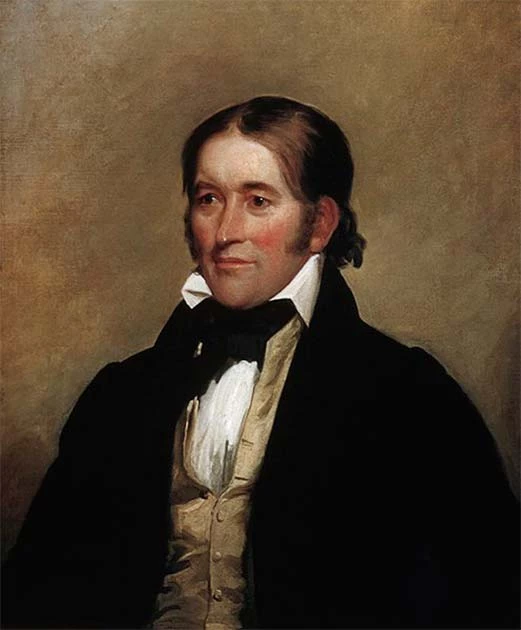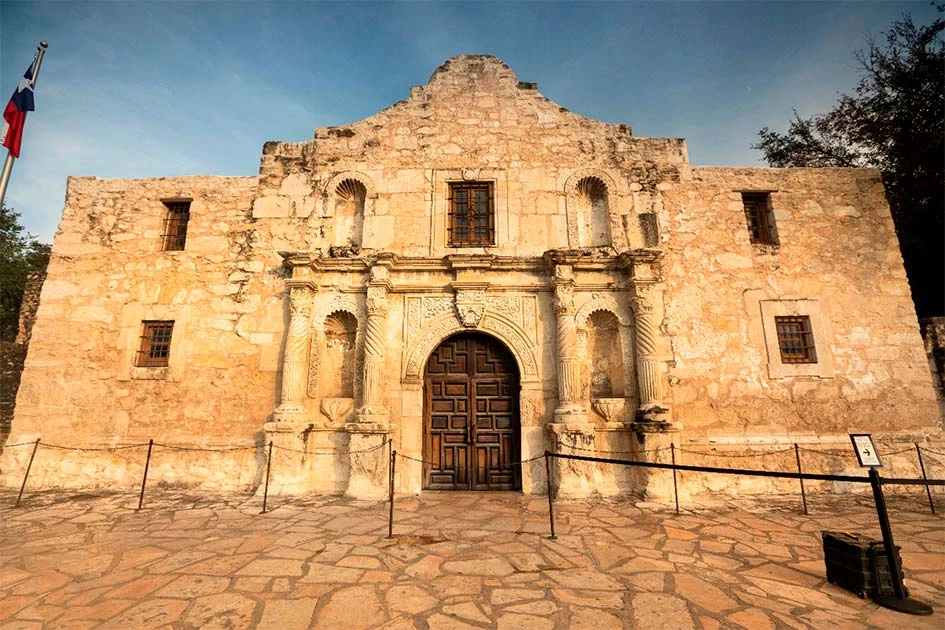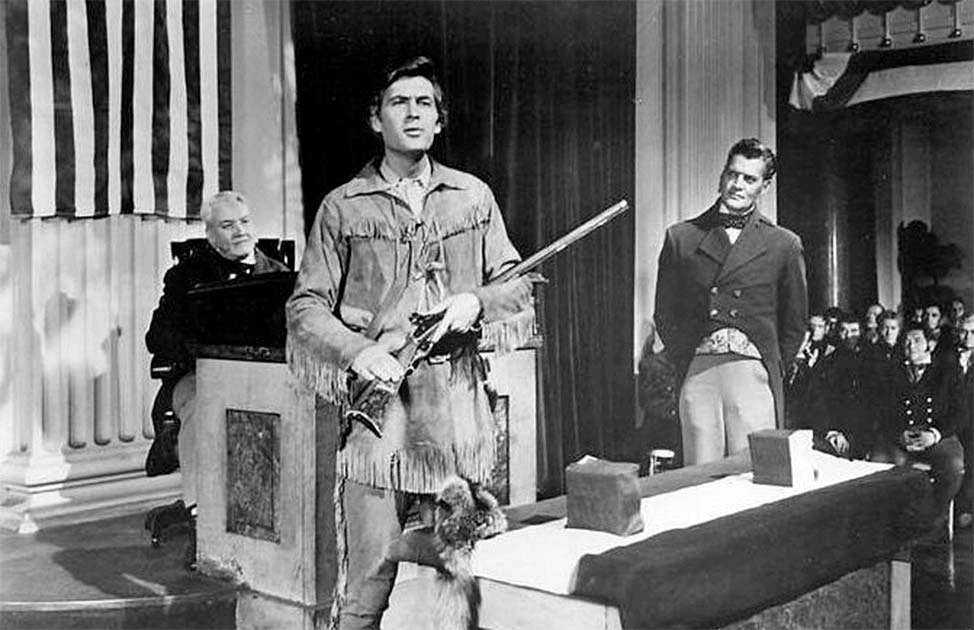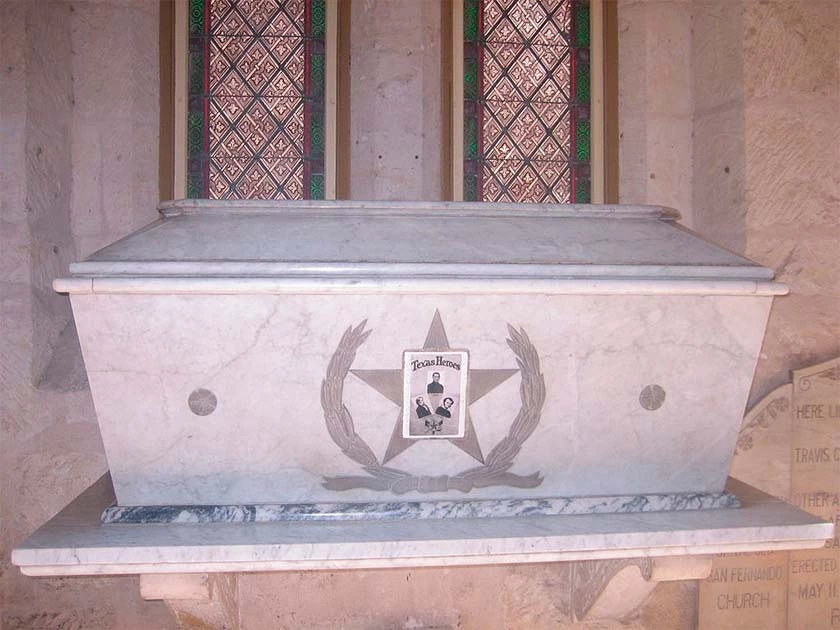There is something about American folk heroes that ensures they persist in the public consciousness. The explorer and politician Daniel Boon, John Chapman aka “Johnny Appleseed”, railroad worker John Henry, and Molly Pitcher, the woman who carried water for soldiers in the American Revolution, are just some of the examples.
These individuals are known historical figures or, in the case of Molly, a combination of the actions of more than a single individual. But one of the most beloved heroes has to be Davy Crockett.
He was known for his coonskin cap, trekking the frontiers of America, and legendary death at the Battle of the Alamo. What if the lone-man-standing idea of the death of Davy Crockett is simply a legend that we hold on to tightly?
Davy Crockett
David Crockett, the “King of the Wild Frontier,” was an American folk hero, politician, frontiersman, and soldier. Davy Crockett was born on August 17, 1786, in what is now known as Greene County, Tennessee.
The Crockett family struggled to make ends meet, and the family moved to Cove Creek, where Davy’s father, John, built and lost a gristmill. The family constantly moved due to bankruptcy and forfeiting their home, and Davy’s father indentured him to a local man to help make up for the family’s debt.
This became a pattern for Davy, being indentured by his father, working for a few months, then taking off on foot to return home to a tavern his father owned in Tennessee until his father’s debt was paid off. Davy would be used to the hard life from an early age.

In 1817, Davy Crockett and his family moved to a new property in Lawrence County, Tennessee. He became a public official acting as a commissioner to help configure the country’s and state’s boundaries.
In November of the same year, he was appointed as the county’s justice of the peace. A year later, he was elected as the new lieutenant colonel of the Fifty-seventh Regiment of the Tennessee Militia.
At this time, Davy was also operating multiple businesses, which was too much, so he resigned from the militia and the justice of the peace in 1819. In 1921 Davy Crockett resigned as the county commissioner to run for a seat in the Tennessee General Assembly. Once again, Davy Crockett was elected to higher and higher titles while fighting for the rights of poor settlers who “he felt dangled on the precipice of losing the title to their land due to the state’s complicated system of grants.”
In October 1824, Davy Crockett formally announced that he intended to run for a US House of Representatives seat in 1825. He lost the election, but the mayor of Memphis told Crockett to run again to win a seat in Congress. He was successful and was a member of Congress for the 1827-29 term and was re-elected for the 1829-31 term as well.
One notable political action Davy Crockett took was that he opposed Andrew Jackson’s 1830 Indian Removal Act and was the only representative from Tennessee to vote against the act. In 1835 Crockett gathered a company of volunteer militiamen and went to Texas, where revolution was brewing. This is how Davy Crockett arrived at the Alamo Mission San Antonio and fought during the battle.
Battle of the Alamo
The Battle of the Alamo (February 23-March 6. 1836) was a key moment in the Texas Revolution. Mexican troops led by President General Antonio Lopez de Santa Anna waged a 13-day-long attack to retake the Alamo Mission.

Santa Anna was successful, and the Alamo was captured by the Mexicans after most of the occupants and fighters at the Alamo were dead. The Texan defenders, whose ranks numbered between 185 and 260 men, while the Mexican troops numbered around 2,000 to 2,100 men.
The Texans were crushed by Santa Anna’s no-prisoner stance toward the battle, and between 182-257, Texans and soldiers at the Alamo died. James Bowie, of the Bowie knife, and Davy Crockett were among them.
Historians and proud Texans agree that Davy Crockett died at the Battle of the Alamo, but how this American folk hero with a coonskin cap died is still fiercely debated. Davy Crockett has always been portrayed in films and books as this brave and fearless leader who fought until the end with valor to defend the Alamo.
One image of Davy Crockett that Americans hold close to their hearts was due to Walt Disney. In the 1950s, Disney developed a TV show about Crockett, and Davy was portrayed as the last person alive in the Alamo, standing on top of the wall bludgeoning Mexicans with his rifle before the screen fades to the credits.
Disney’s interpretation of most things is dramatic, the good guy wins in the end, and everyone is happy. This is not how other reports of Davy Crockett’s death go.
President Theodore Roosevelt wrote about Davy Crockett in his book “Hero Tales from American History” in 1895. Roosevelt’s recounting of the Battle of the Alamo was that Crockett was the last man standing.
Still, he and three or four other men entered the Alamo where “desperate hand-to-hand combat followed.” Roosevelt wrote how the heavily wounded Davy Crockett was the last alive, surrounded by the bodies of Mexicans he had killed. He fought until he lost too much blood and couldn’t fight back.
According to Roosevelt, it was then that musketeers shot Crockett to death. This is the most common story of the Battle of the Alamo and the death of brave Davy Crockett. However, Roosevelt mentions, “Some say when Crockett fell from his wounds he was taken alive, and then shot by Santa Anna’s order; but his fate cannot be told with certainty, for not a single American was left alive… Yet the died well avenged, for four times their number fell at their hands in battle.”
Many insist that Crockett died as the last American left standing. He was surrounded by the bodies of men he single-handedly fought, and he died a hero. Those who believe this version of the death of Davy Crockett are adamant that this is what happened and how it happened.

They are vocal about insisting he died as a hero, not a prisoner. A formerly enslaved person named Ben, who “worked as a cook for one of Santa Anna’s officers,” swore that he saw the corpse of Davy Crockett surrounded by “no less than 16 Mexican corpses”. Yet others believe that is not quite the way Davy Crockett died. Rumors began spreading about Crockett surrendering to Santa Anna’s troops and subsequently being executed just days after the battle.
The de la Peña Memoir
The memoir of the Mexican officer José Enrique de la Peña, who was at the Battle of the Alamo, was found in 1955 and published under the title La Rebelión de Texas – Manuscrito Inédito de 1836 por un Oficial de Santa Anna. Americans largely ignored the book, and it wasn’t until the book was published in English as With Santa Anna in Texas: A Personal Narrative of the Revolution in 1975 that the scandal over the death of Davy Crockett began.
The memoir tells of Davy Crockett being taken as a prisoner along with six or seven other men from the Alamo at the end of the battle. The men were brought before Santa Anna, who demanded they be killed.
The memoir stated that they were killed with bayonets and died with dignity. The translator began to receive threatening anonymous letters and phone calls from Davy Crockett worshipers, enraged that someone dared to suggest that Crockett did not die while defending the Alamo.
It is no surprise that fans have questioned the validity of the memoir, and many self-appointed historians have said it is a fake account. A retired firefighter claims that the journals were a combination of different kinds of paper from different manufacturers that were cut to look like an actual historical document.
One John Wayne fan (John Wayne did play the role of Davy Crockett during his career) publicly questioned the validity of the memoir because the memoir was released at a “suspicious time” and because following Disney’s Davy Crockett, there was much historical interest in the King of the Wild Frontier.
It took until 2001 for an archivist to study the original manuscript in a laboratory to determine the authenticity of the memoir. While it is easy to forge convincing historical documents, professionally trained archivists know to look beyond yellowed pages.

The ink and paper were studied to determine if they were accurate for the time and location in which the manuscript was written. Chemical tests are performed on the paper, and binding and ink ingredients are tested in a laboratory. Now, anyone could just say, “Yep, it’s real,” but this archivist published a peer-reviewed study from his experiment, which provides credible support to his results.
The results of the archival research were that both the paper and ink used on the manuscript were the types used by members of the Mexican army in the 1830s, and the handwriting was compared with Mexican military archival records of documents signed or written by de la Peña, and they matched. Yet people refuse to believe that Crockett might not have died in the heroic manner we have been told and made to believe.
Top Image: The Fall of the Alamo. Davy Crockett is the guy in beige waving his rifle in the center. Source: Robert Jenkins Onderdonk / Public Domain.